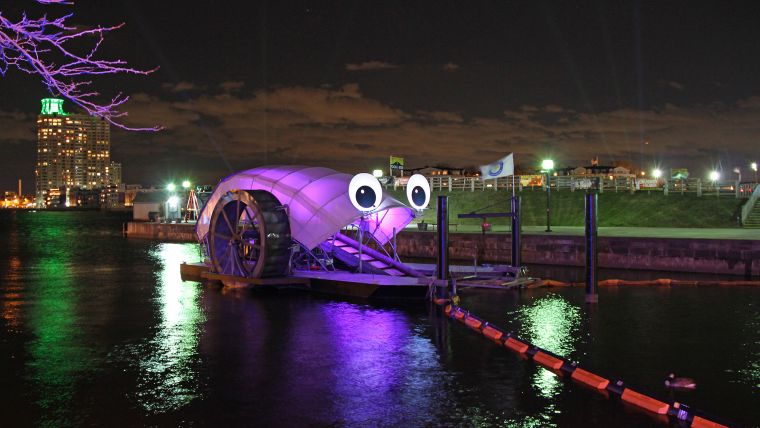How Mr Trash Wheel Intercepts Plastic Before it Reaches the Ocean
Video Included
Last week, we published a news item on the Interceptor, a new Ocean Cleanup project. This week, we are zooming in on Mr Trash Wheel, a semi-autonomous trash interceptor that is placed at the end of a river, stream or other outfall. Far too lazy to chase trash around the ocean, Mr Trash Wheel stays put and waits for the waste to flow to him, according to a description of the team behind the system. Sustainably powered and built to withstand the biggest storms, Mr Trash Wheel uses a blend of solar and hydropower to pull hundreds of tons of trash out of the water each year. Mr Trash Wheel is an initiative of the Baltimore Waterfront Partnership.
How Does Mr Trash Operate?
As described on Mr Trash Wheel's website the system works as follows:
Step 1: Funnel the Trash
Using containment booms, trash flowing down the river is funnelled into Mr Trash Wheel’s gaping mouth. The booms have a 2-foot skirt that allows them to capture trash floating beneath the surface. Fun fact: the trash booms also help stop oil slicks from polluting the water.
Step 2: Rake and Convey
Powered by the sun and the current of the river, Mr Trash Wheel’s rake lifts litter out of the water and onto his conveyor belt. The conveyor belt moves very slowly but is strong enough to lift anything that comes down the river including tyres, mattresses, and even trees.
Step 3: Feel the Churn
Mr Trash Wheel’s giant, 14-foot, water wheel is the engine that powers his rakes and conveyor. When there’s not enough water current, solar panels power pumps that pump water on to the wheel to keep it churning. Mr Trash Wheel can operate in tidal waterways, which means he keeps churning even if the river is flowing upstream.
Step 4: Into the Dumpster
When trash reaches the top of the conveyor belt, it falls into a dumpster sitting on a separate floating barge. Once the dumpster fills, it is towed away and replaced with an empty dumpster. Ideally, the plastic Mr Trash Wheel picks up gets recycled, but current sorting technologies are unable to separate the plastics from all the other trash. For the time being, the best alternative is to incinerate the trash to create electricity.
Results Until Now
If you lined up all the cigarette butts collected by Mr Trash Wheel, they would stretch over 150 miles. The most Mr Trash Wheel has ever collected in a single day is 38,000 lbs. Here you can watch Mr Trash Wheel in operation.














